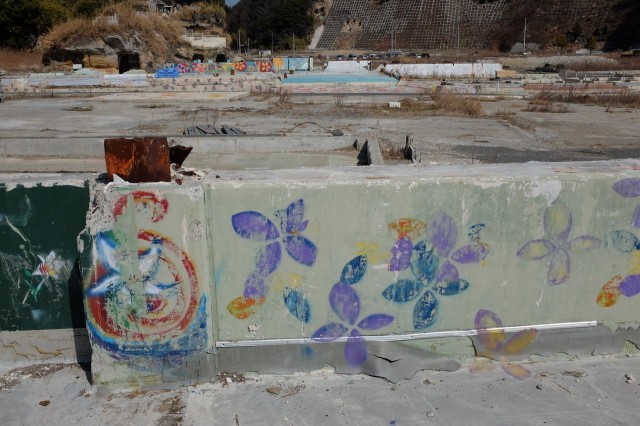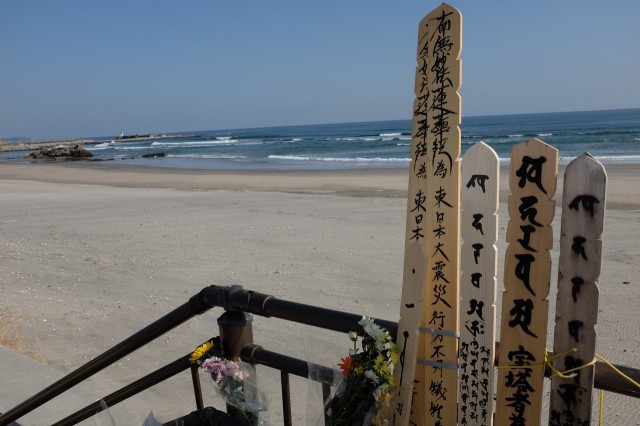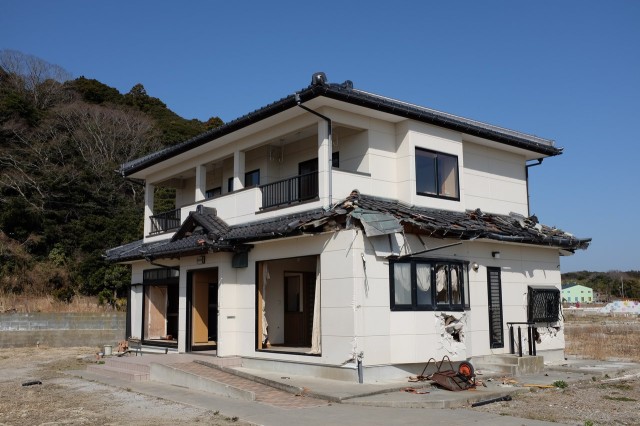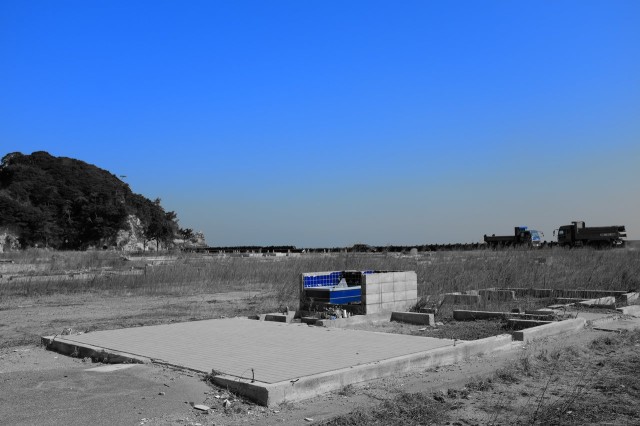
New Managing Director for Bellona Norway
The Board of the Bellona Foundation has appointed former Minister of Climate and the Environment Sveinung Rotevatn as Managing Director of Bellona No...
News

Publish date: March 12, 2014
News
As Japan yesterday marked its now traditional minute of silence for the victims of the Great Eastern Japan Earthquake, and Prime Minister Shinzo Abe made televised pledges to speed recovery, Japanese observers and editorialists predicted the commemoration would be swept back under the carpet from whence it had been pulled.
The plodding actions of the government to address the still smoldering embers of the destruction seem to have proved their point.
The tsunami caused by the 9.0 magnitude earthquake of March 11, 2011 off the Northeast coast of Japan killed 15,884 people and left another 2,636 missing. The force of the quake moved one of Japan’s four main islands, Honshu, slightly to the east. Entire towns were literally erased from the map, no longer visible even to that modern tool of amateur cartography, Google Maps.
It also took down the Fukushima Daiichi nuclear power plant, causing a triple meltdown and an evacuation of 160,000 people from a 20-kilometer radius surrounding the plant, 54,000 of which will likely never see home again. As Vladimir Slivyak of Russia’s Ecodefence pointed out in his blog on Echo of Moscow radio, (in Russian) “nuclear disasters have a beginning, but don’t have an end.”
In all, 470,000 people were put on the move as their homes collapsed or were sucked into the sea in the immediate aftermath. Some were taken in by relatives. Others managed government resettlement, or simply staked new claims on higher ground.

Refugees from the Fukushima Daiichi meltdowns – perhaps because of Japan’s heightened sensitivity to disasters nuclear – where rehoused especially quickly and assigned government stipends, a cause of ongoing resentment from the more than 100,000 other people who are still displaced by the rubble of the quake.
According to news agencies, Abe promised in a speech at the National Theater in Tokyo on the March 11 anniversary to speed up the government’s five-year, 25 trillion yen ($245 billion) reconstruction program. The mind-boggling expenditures, however, are making little impact.
But to William Pesek, who penned an op-ed piece in today’s edition of The Japan Times, a respected English language daily, Abe’s remarks ring of re-circulated hot air.
“After 1,095 days, untold billions of dollars of public expenditures and countless pledges to accelerate rebuilding efforts, radiation is still leaking at Fukushima,” wrote Pesek. “Only 3.4 percent of planned public-housing projects are close to being completed.”

Official estimates from Japan’s land ministry bear that out: As of last month, just 1,011 of a planned 29,500 public housing units had been completed in eight prefectures in northeast Japan, said figures reported by The Christian Science Monitor.
The Japan Times’ Pesek wrote that, “The official reason for the glacial pace of reconstruction is a shortage of labor, building materials and bids from the construction industry. The real problem is that the Tokyo political establishment has largely forgotten about [Fukushima.]
Will the levee at Fukushima break?
At the plant itself, a contingent of foreign reporters ushered in on Monday could’t help notice that, while things are no longer exploding, progress is definitely of the one-step-forward, two-steps-back variety – a set of circumstances Toshimitsu Motegi, Japan’s Minister of Economy Trade and Industry (METI) famously compared last September to playing a game of “whack-a-mole.”
The main problem is continued inundation of radioactive water – the result of early efforts to cool reactor cores that were completely severed from primary and back up coolant systems when the 11 meter tsunami hit the plant three years ago.

Engineers must pour water onto the melted uranium fuel in the bottom of the plant’s three most-damaged reactors – reactor Nos 1, 2 and 4 – to keep it from overheating. That generates 400 tons of radioactive water every day.
More than 436,000 tons of water are stored in the tanks and more trees onsite have been cleared to make way for more tanks.
“It’s the issue that keeps me awake at night,” Dale Klein, a former chairman of the US Nuclear Regulatory Commission, which advises Tokyo Electirc Power, or Tepco, the utility that owns Fukushima Daiichi, and is responsible for its clean up, told the Economist magazine.
“Storing massive amounts of water onsite is not sustainable,” Klein said.
Added to that, groundwater flowing in from the hills behind the facility becomes tainted when it mixes with water being used to cool melted fuel in the basements of the damaged reactors.
Shuchi Tanaka, chief regulator at Japan’s new Nuclear Regulatory Authority (NRA), which began operations in 2012 in an effort to separate Japanese regulators cozy ties with industry, last year urged Tepco to come clean about its inability to hold back the rising waters.
The scheme of pouring 400 tons of water onto molten uranium a day was a spit-and-string solution at best, and the build up of highly irradiated water was planned for badly.

Other fuel cooling systems are in the works, but they won’t do anything to take away the water that has already accrued. The NRA has been saying since last year that the only solution may be to dump it into the Pacific – and that scenario is looking more likely despite the blowback the regulator will get from Japan’s powerful fishing industry neighboring countries, most especially South Korea.
All of these entities would require assurances that the dump would be safe before it was unleashed into the sea.
Tepco – who was nearly hooted off the stage for its flailing efforts to bring the water problems under control last year – is putting its hopes in a new water treatment system called the Advanced Liquid Processing System, or ALPS to achieve that end.
The system, jointly constructed by Toshiba and US- based nuclear waste processor EnergySolutions, is supposed to be capable of removing some 62 radionuclides from the water, most significantly cesium and strontium.
According to reports from the journalist who visited Fukushima Daiichi on Monday, the water, once pumped though the system, would meet Japanese discharge standards.
But despite the tank farms and new efforts to purify water, Fukushima Daiichi’s manager Akira Ono says there is still the separate problem of another 400 tons of radioactive water leaking into the ocean each day.
In the meeting with journalists at the plant, he vowed that the problem would be solved.
“The most pressing issue for us is the contaminated water, rather than decommissioning,” Ono told foreign media organizations, including the Monitor, on Monday. After the water issue is solved, the work of removing damaged spent nuclear fuel from the plant can being by 2020, he told foreign media.
Fuel removal from storage at Reactor No 4
In late November, Tepco began to robotically remove 1,300 spent nuclear fuel assemblies and 200 new ones from the spent fuel storage pool atop the blast battered reactor building No 4. Though the No 4 reactor was idle at the time of the disaster, its housing was pummeled by hydrogen explosions from neighboring reactors.
This put the fuel pool at jeopardy, and sparked speculation that a spill of the fuel assemblies from the rickety perch 30 meters above the ground and the inability to cool them could spark uncontrolled nuclear chain reactions worse than the initial disaster itself.
In a rare moment of success, however, Tepco was able to design and begin operations on a robotic fuel assembly retrieval system. The system pulls fuel rods in from their storage racks in the pool and inserts them one by one into a heavy steel chamber while the assemblies are still under water.
Once the chamber is removed from the pool and lowered to the ground, it will be transported a common storage pool in an adjacent and undamaged building on the site of the plant. The water to water transfer, said Tepco, assures that no workers are exposed to radiation.
On February 25, the system encountered its only glitch thus far when the cooling system for the fuel pool went offline, and halted the fuel removal process for about five hours, the Kyoto news agency, as quoted by the Japan Times, reported.
The culprit, said Tepco, was a cable that was damaged by workers during drilling work near the electrical equipment, said the paper.
Fukushima’s generation of thyroid testing
More disturbingly, debates over the impact of the Fukushima Daiichi meltdown have this year started focusing on thyroid cancer rates among children who were exposed to its fallout, the Guardian reported.
Tests taken of Fukushima children seem to suggest a rise in the number of children showing symptoms of cancer, said the paper. But it remains unclear if this is the result of radiation exposure or more strenuous thyroid cancer testing.
Some 33 cases of thyroid cancer in children below 18 years of age at the time of the accident have been confirmed, while another 75 are suspected to have thyroid cancer, the paper reported. That is a significant jump since last year, when 17 cases were confirmed and an additional 59 suspected.
But a bitter debate swirls around whether the above normal rates of thyroid cancer are connected to the nuclear accident, or if they are the inevitable result of a testing regime unprecedented in size, and conducted using state-of-the-art medical equipment.
Some 254,000 out of 375,000 Fukushima children and adolescents from the Fukushima area have been tested – and will continue to be tested throughout their lives, said the paper.
Japanese medical officials are hesitant to draw a direct line between the Fukushima disaster and the seeming spike in thyroid cancer rates, though concede further investigations must be conducted, they told the Guardian.
Nevertheless, they marshal data from Chernobyl – their only basis for comparison – to account for their doubts: In Fukushima, the first recorded cases of thyroid cancer – whose latent period can be between four or five years to several decades – came just a year after the meltdown. In Chernobyl, it took four years before cancer rates rose, the paper reported.
Official lip service nothing more than ‘disaster porn’
But to The Japan Times, this approach comes off as splitting hairs. In his op-ed column, Pesek railed that, “A whole generation of kids in the northeast Tohoku region are tested regularly for thyroid cancer. They can barely remember anything but temporary housing, and must wonder if outdoor playgrounds really exist.”

Pesek went on to describe Abe as distracted by meaningless issues, and that his PR machine has had to crank up in force this year to play up the 13 visits he has made to the Tohoku district of Fukushima prefecture over the past year and a half.
“Face it,” he wrote. “These obligatory jaunts up north are nothing more than disaster porn.”
The paper somewhat excused Abe as someone who inherited the Fukushima disaster, rather than being on watch when it occurred. But it wrote that trips by Abe’s predecessors Naoto Kan and Yoshihiko Noda, dozens of celebrity journalists and Tokyo’s political cohort yielded nothing more than a numbed state of “chronic inattention.”
If Abe can find time to win the Olympic bid for his country – and the resources to build it – asks the paper, then why can’t it find the resources to properly clean up the radioactive mess that so threatens those who will attend the Games in 2020?
For the time being though, as noted by the Japan Times, nuclear activists and observers of the Japanese government, Fukushima will – barring any disastrous news from the site – go back in a box until it is touted again next year.
Meanwhile, as noted by one protest t-shirt observed yesterday by the Japan Times, Japan’s “kid still can’t play outside.”

The Board of the Bellona Foundation has appointed former Minister of Climate and the Environment Sveinung Rotevatn as Managing Director of Bellona No...

Økokrim, Norway’s authority for investigating and prosecuting economic and environmental crime, has imposed a record fine on Equinor following a comp...

Our op-ed originally appeared in The Moscow Times. For more than three decades, Russia has been burdened with the remains of the Soviet ...

The United Nation’s COP30 global climate negotiations in Belém, Brazil ended this weekend with a watered-down resolution that failed to halt deforest...